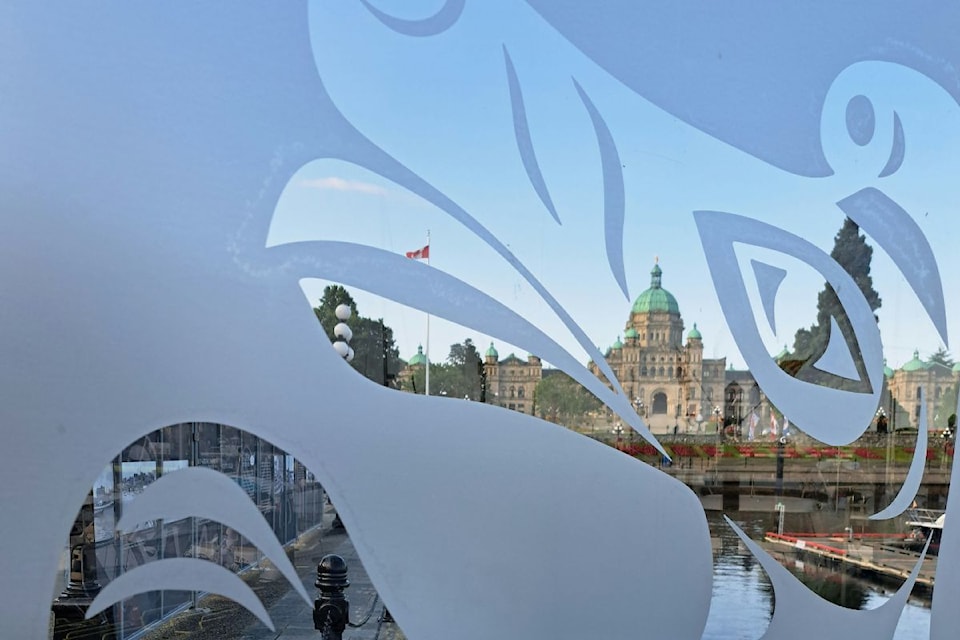Visitors to the Inner Harbour can now see items of a new art installation set to expand throughout downtown Victoria, which connects visitors to the area's rich First Nations culture.
The Greater Victoria Harbour Authority (GVHA), together with Xʷsepsəm Nation and Songhees Nation, has launched a collaborative placemaking project to install lək̓ʷəŋən artworks in downtown Victoria. Placemaking expresses a community's identity through art, design or architecture.
"It is deeply important for lək̓ʷəŋən people to have our artwork displayed around Victoria and especially here around the Inner Harbour because it shows that we are still here, that our presence is still here, that our artwork can be honoured not just as individuals but as a nation together," said Songhees artist Melissa McClurg in a video from the GVHA.
McClurg's piece is on family ties and connection, and features three orca whales with markings on their side to "show what they have survived". Even the baby has markings on it to symbolize generational trauma, McClurg said.
At the dock entrance by Ship Point, a stylized metal gate featuring a sea otter and salmon, designed by Xʷsepsəm artist Darlene Gait, has been installed. Four more dock gates will be installed in the coming months.
Other newly installed artworks at the Inner Harbour causeway include four red and yellow octopus umbrellas designed by Songhees artist and educator Clarence “Butch" Dick (Yux’wey’lupton) and two sea wolves with land and seascapes on the Inner Harbour marina gates designed by artists John Warren and Lajah Warren. There are also hummingbird banners on lampposts on the south side of the lower causeway by Songhees artist Brianna Bear.
PacifiCan, a federal economic development agency for B.C., provided $49,000 in funding, which was matched by the GVHA.
The Inner Harbour has been an important meeting place for generations for the lək̓ʷəŋən people, said hereditary chief Ed Thomas (čaleŋən hiwəs sínupn), Xʷsepsəm Nation, in a press release. In the 18th century, it had some of the best clam beds of the West Coast, providing a food source for the nearby Songhees village that existed in today's Beacon Hill Park, according to Victoria Downtown Residents Association.
More on the artists and artworks can be found at gvha.ca/first-nations-partnerships/harbour.

